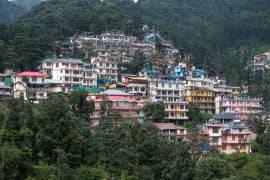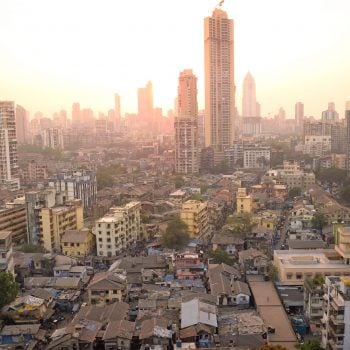Safe as Houses: It's the fundamentals that matter and India has got them right
Safe as Houses? Not quite. Even without the market shredding impact of America’s Sub Prime crisis of the last decade, house prices had fallen in the United Kingdom by 18% between 1989 and 1995 (in London the fall was closer to 37%), and in Japan prices fell by more than 60% between 1990 and 2000: between 1987 and 2007, the S&P Index in the States rose by more than 500%, compared with a 200% growth in US real estate. And of course, the seemingly overwhelming case for equities over bricks and mortar during this turbulent twenty-year period wasn’t hard to explain. The United States, in common with most western economies, was riding high(ish) on a tide of acronyms, CDOs and CDSs, not to mention the sliced and diced (and dodgy) mortgage portfolios taken to market with a guaranteed AAA rating.
The lesson for Real Estate markets across the globe is, equally obviously, straightforward: look beyond the froth and examine the fundamentals…examine them closely and examine them carefully.
So when it comes to India, and despite some low voltage gloom earlier this year in the run up to the elections, the fundamentals of the Real Estate Market couldn’t be looking better. Even India’s acronyms are more encouraging: RERA and GST represent massively significant policy initiatives from the Modi Government that have, if anything, strengthened the sector’s fundamentals. But most of all, demand for real estate on the subcontinent is running at a high because it reflects the economic realities of the fastest growing large economy in the world, with a burgeoning and increasingly urbanised population looking for affordable (and, for some, not so affordable) homes among India’s rapidly expanding conurbations.
And that’s not froth…it’s hard, crystalline fact.
In New Delhi last week, the City’s Development Authority (DDA), received more than 50,000 applications for funding under its Housing Scheme, with some Rs 570 Crore, or nearly $82 Million, having been collected by sponsoring banks (it seems it would have been more but for a certain bureaucratic ineptness among the banks involved, which is also something of a global phenomenon over recent years).
The DDA will shortly draw lots to select those applicants who are lucky enough to be allocated flats, but the number of properties on offer is barely a third of the overall subscription (17,922) and that is a striking testament to the continuing strength of the market at large: after all, in a parallel world, any IPO that was three times oversubscribed would see an immediate jump in the underlying share value. In New Delhi today, we are witnessing an unmistakable bellwether for future real estate growth.
Then, of course, there is that other important acronym to consider, NRI: the Non Resident Indian.
Historically Indian Real Estate had been at the top of the wish list of most NRIs looking to invest in the subcontinent, but delays in construction (not to mention a few high profile, fly by night developers) had dampened this demand significantly.
But that all changed with RERA (the Real Estate (Regulation and Development) Act 2016): key legislation which gave enhanced protection for those purchasing properties under construction, with the result that more and more NRIs (as well as, of course, domestic buyers), have steadily moved back into Indian Real Estate. So too, GST (the ground breaking new Goods and Services Tax) reduced the tax payable on newly constructed properties from 12% to 5% (1% for those covered by the Affordable Housing Programme) and Investors haven’t been slow to see the opportunities.
Added to all that, a stronger Dollar has also turbo charged levels of NRI interest, with Housing and Makaan.com reporting an increase from 30% to 40% in NRI leads last year, and those NRIs based in the UK, US, UAE and Singapore between them now account for 55% of real estate purchases in India.
Yet another bellwether for future growth: more real world facts that make for more attractive fundamentals (and with only three acronyms in sight).
Modulex Construction is the World’s largest and India’s first Steel Modular Building Company, setting out to meet the challenges posed by India’s urban housing shortages in a practical and dynamic manner. The company is at the heart of a project established by Red Ribbon to harness the potential of India’s real estate markets and deliver added opportunities for investors. Because, when it comes to investing on the subcontinent, nobody knows India and its markets better than Red Ribbon.
[nectar_btn size="large" open_new_tab="true" button_style="regular" button_color_2="Accent-Color" icon_family="none" url="https://www.modulex.in/" text="Learn More About Modulex"]
Executive Overview
I for one have never found it surprising that with such an increasingly mobile, increasingly affluent and rapidly expanding population, India is creating one of the most buoyant real estate markets in the world: almost by definition, a mobile and much more urbanised population will difficult to keep still.
And that, in essence, is what I think makes the subcontinent’s property markets so different from their Western counterparts: the fundamentals of demand are not artificially created at the desk of an investment banker in Manhattan, they are real people looking in ever increasing numbers for real (and affordable) homes.
That’s why Red Ribbon has been committed to Modulex Construction from the very beginning of the project, and why we remain committed to the project today. I’m convinced its innovative technologies are a vital answer to the challenges created by these extraordinary markets: a practical and cost effective solution for the extraordinary times we live in.








Leave a Reply